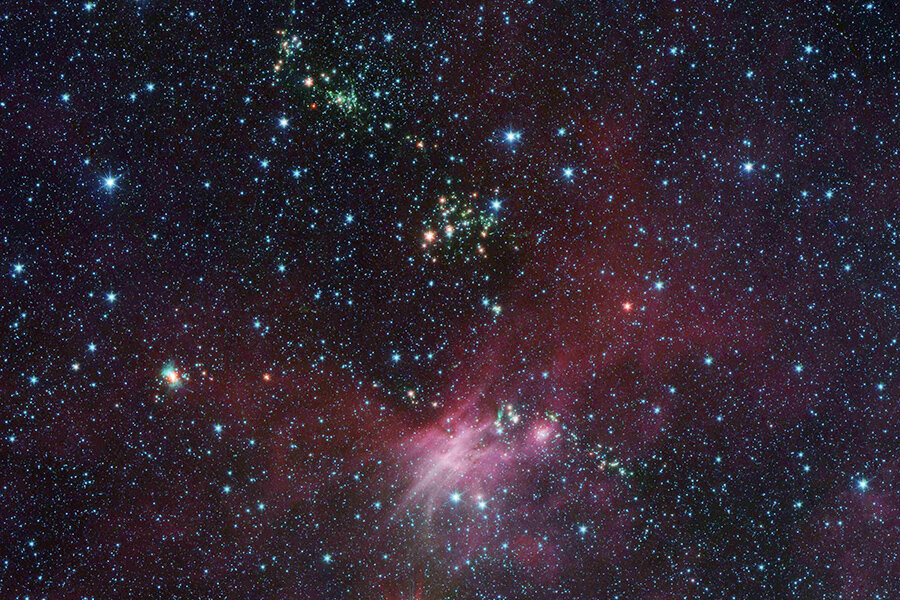How to win interstellar friends and influence aliens with 'One Earth Project'
Loading...
The One Earth Message project is trying to figure out what to say to aliens and how to say it via an interstellar message that may be uploaded to the New Horizons spacecraft on its maiden flyby of Pluto set for July 15. NASA has the idea under consideration.
The One Earth Message project, a crowd-sourced initiative, isn’t asking NASA for funding, but rather has set a financial goal of $500,000. To date, the project has raised over $13,000 of its $500,000 goal, according to the website.
The project is led by Jon Lomberg, the design director for the "golden records" aboard NASA's 1977 twin Voyager spacecraft, who is optimistic and already working with NASA on the prospect of uploading a message from everyday people.
In 2012, the interstellar twins Voyager 1 and Voyager 2 carried gold-plated copper disks with cartridges, needles, and instructions about how to play them. The disks “contained 115 analog-encoded images, as well as audio of thunder and other natural sounds, music and spoken greetings in 55 different languages,” according to Space.com.
“People from every country will have the opportunity to submit photos and other content. Everyone will have the chance to view and vote online for the ones they think should be sent,” according to the One Earth Website. “It will be a global project that brings the people of the world together to speak as one. Who will speak for Earth? YOU WILL!”
However, before you send in a video or dash off a haiku to Pluto, or other alien locations this mission may reach over the next millennium, it might be best to get some expert opinions on just how effective a calling card they might be out there on the final frontier.
Wildlife biologist Forrest Galante says in an interview, “Communicating with animals is about assessing their behaviors and responding accordingly. If an animal is being aggressive, you have to show dominance without scaring it off. If it is being nervous or timid, you have to show understanding and compassion. It's all about body language and how you move on approach.”
"You'd want to show interspecies communication in the video clips where animals and humans interact in a positive, positive way – a cat on its owner's lap, a man petting a lion," Galante says. "The thing you don't want to do, when approaching another species or I guess an alien is to show something aggressive, loud noises, hunters killing things, fighting."
Dr. Arthur Bowman, a biology professor at Norfolk State University who is currently working with NASA as an astrobiologist and on the education program there, says in an interview that the task of opening communications with a new species is also not necessarily like a scene from “Close Encounters of the Third Kind,” where music will bridge the interspecies gap.
“When we think of species, our reference is what’s on planet earth,” Dr. Bowman says. “So there’s no evidence that there’s any species with material structure like what’s on earth anywhere else.”
“Then, in terms of the ability to have matter in species form that receive or produce a signal is another far stretch. Planet Earth is 40 to 100 million different species now and the only one capable of doing that is humans,” Dr. Bowman says.
While we do communicate with other species here on our planet, the professor adds, “When you’re assuming species other than on planet earth then, again, you’re going back to the assumption that they evolved like ours.”
“Binary code’s already been done. Music’s been done,” he says. “We need to send a pattern to show ‘Hey, there’s somebody’s there and they’re thinking about something.’”
He said one visual possibility would be a bar code or what he calls “one of those modern day cave paintings you see on the back of minivans of the father, mother, kids and a soccer ball or dog to indicate reproduction, family, social structure and offspring.”
“If you look at the bare bones of life to life interaction, you’re looking for reproduction and energy transduction,” Dr. Bowman says. “So what would you send to somewhere else when you don’t know that there’d even be any consciousness about them,” he asks. “If you give ‘Crime and Punishment’ to a squirrel, what’s it gonna do?”
Since the assumption is that life found by New Horizons is capable of understanding at a higher level, Dr. Bowman suggests sending some genetic coded message that translates to AUG.
AUG is a genetic code for the first amino acid in a peptide which Dr. Bowman says, “is pretty much universal for all life. It codes for a modified methionine.”
The genetic code is the relation between the sequence of bases in DNA and the sequence of amino acids in proteins, he explains.
“AUG is triplet code for the amino acid formylmethione. If they can recognize that code then they know about molecular genetics. If they know that, then they are pretty sophisticated,” he says.






